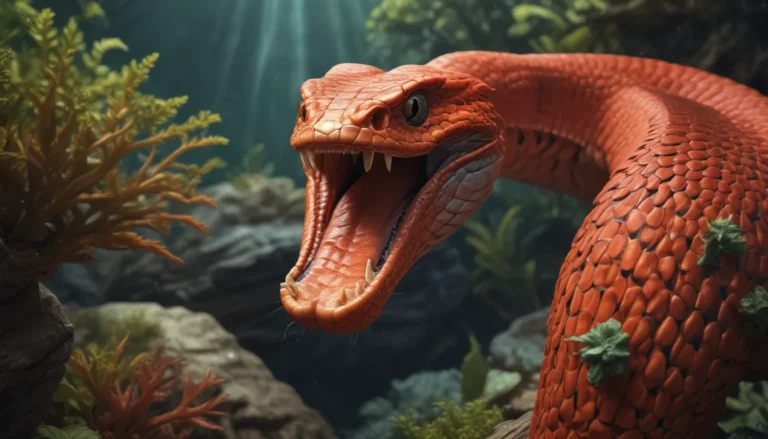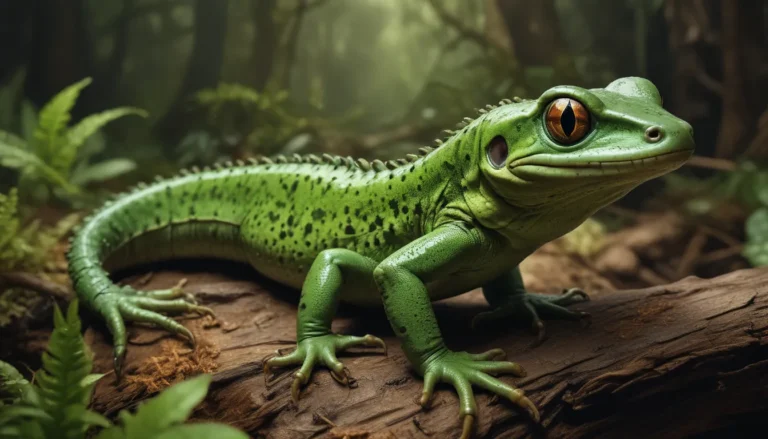The pictures we use in our articles might not show exactly what the words say. We choose these pictures to make you interested in reading more. The pictures work together with the words but don’t take their place. The words still tell you the important facts.
Welcome to the world of the Mirror Spider, a fascinating arachnid that captivates scientists and nature enthusiasts with its unique abilities. In this article, we will unravel the mysteries surrounding this tiny creature from Australia, exploring its reflective body, camouflage skills, nocturnal habits, and more. Join us as we delve into the intriguing world of the Mirror Spider and uncover 11 surprising facts that make it a true marvel of evolution.
Unveiling the Reflective Body of the Mirror Spider
The Mirror Spider, scientifically known as Thwaitesia argentiopunctata, derives its name from its distinct feature – a reflective body surface. Covered in mirror-like silver scales, its abdomen shines like a mirror, making it nearly transparent and allowing it to blend seamlessly with its surroundings. This unique adaptation serves as a form of camouflage, helping the spider evade predators and ambush unsuspecting prey.
Master of Camouflage: The Mirror Spider’s Survival Strategy
Evolution has sculpted the Mirror Spider into a master of camouflage. By reflecting light and mimicking its environment, this arachnid becomes virtually invisible to both predators and potential prey. This ability to blend seamlessly with its surroundings is a crucial survival strategy that has enabled the Mirror Spider to thrive in its natural habitat in Australia's tropical rainforests and coastal regions.
The Intricate Web Patterns of the Mirror Spider
Unlike conventional spider species that build orb-shaped webs, the Mirror Spider exhibits a unique approach to web construction. Its webs are irregular in shape, dense, and closely resemble a net. These intricate patterns serve as traps for capturing unsuspecting insects and other arthropods. The Mirror Spider's web-building skills are as mesmerizing as they are effective in securing its next meal.
Size and Appearance: A Closer Look at the Mirror Spider
Measuring up to 5 millimeters in length for females and even smaller for males, the Mirror Spider is relatively petite in size. Its elongated body, slender legs, and distinctive silver spots make it a visually striking arachnid. Despite its small stature, the Mirror Spider's remarkable abilities and captivating appearance set it apart from its larger counterparts in the spider world.
Exploring the Mysterious Venom of the Mirror Spider
While the Mirror Spider possesses venom glands, its venom is not known to pose a threat to humans. Primarily used to immobilize and subdue prey, the spider's venom targets small insects and other arthropods. This unique feature adds to the Mirror Spider's allure, showcasing its hunting prowess without endangering those who encounter it.
The Enigmatic Mating Rituals of the Mirror Spider
During courtship, the male Mirror Spider engages in an intricate display to attract its female counterpart. Through leg waving and body vibrations, the male attempts to win over the female for mating. Once successful, the female will carefully lay her eggs in a silk sac and guard them until they hatch, showcasing the delicate dance of reproduction in the world of the Mirror Spider.
Embracing the Nocturnal Nature of Mirror Spiders
Mirror Spiders are creatures of the night, engaging in nocturnal activities such as hunting and web-building under the cover of darkness. This strategic behavior allows them to avoid predators and extreme daylight conditions, highlighting their adaptability to their environment. By thriving in the shadows, the Mirror Spider demonstrates its resilience and survival instincts in the face of potential threats.
The Remarkable Sensory Abilities of the Mirror Spider
Equipped with highly developed sensory abilities, the Mirror Spider boasts excellent vision that enables it to detect subtle movements and vibrations in its surroundings. This heightened sensitivity aids in identifying potential prey and evading dangerous predators, underscoring the spider's exceptional adaptability and survival skills in the wild.
Conservation Concerns: Protecting the Future of Mirror Spiders
While Mirror Spiders are not currently categorized as a threatened species, habitat destruction and climate change present potential risks to their population in the future. Conservation efforts play a crucial role in safeguarding the habitats of these fascinating arachnids, ensuring their continued existence and contributing to the preservation of biodiversity in Australia's natural ecosystems.
Unveiling the Enigmatic World of the Mirror Spider
In conclusion, the Mirror Spider stands out as a captivating creature that showcases the wonders of nature's evolutionary brilliance. From its reflective body and camouflage skills to its nocturnal habits and sensory abilities, the Mirror Spider offers a glimpse into the intricate web of life that surrounds us. Whether you're an arachnid enthusiast or a curious observer of the natural world, the Mirror Spider's unique traits and behaviors are sure to spark your fascination and appreciation for the diverse species that call our planet home.
FAQs: Unraveling Common Questions About Mirror Spiders
- What is a Mirror Spider? A Mirror Spider, also known as Thwaitesia argentiopunctata, is a species of spider renowned for its reflective body and remarkable abilities.
- Where can Mirror Spiders be found? Mirror Spiders are native to Australia and inhabit tropical rainforests, gardens, and coastal regions.
- How do Mirror Spiders achieve their reflective appearance? Mirror Spiders possess specialized cells on their abdomens called guanine crystals that reflect light, giving them their distinctive shine.
- Why do Mirror Spiders have a reflective body? The reflective body of Mirror Spiders serves as camouflage, helping them blend in with their surroundings and evade predators.
- How do Mirror Spiders defend themselves? When threatened, Mirror Spiders can perform rapid movements with their legs and abdomens, creating a dazzling display to confuse predators.
- Can Mirror Spiders be kept as pets? Mirror Spiders are not commonly kept as pets due to their specific care requirements and limited availability in the pet trade. It is best to appreciate them in their natural habitats.
As we uncover the fascinating world of the Mirror Spider, let us continue to appreciate the beauty and complexity of nature's creations. Through curiosity and conservation efforts, we can ensure the preservation of unique species like the Mirror Spider for future generations to marvel at and study. Join us in celebrating the wonders of the natural world and embarking on a journey of discovery with the enchanting Mirror Spider by our side.






